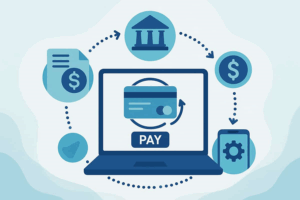
Fintech startups are outmaneuvering industry giants with targeted digital strategies. While established financial institutions pour millions into broad marketing campaigns, agile startups achieve 3-5x better ROI by leveraging precise SEO, ASO, and user acquisition tactics. The numbers speak for themselves: emerging fintech players capture 40% of new market share by focusing on underserved niches and deploying data-driven optimization. Let’s examine the proven playbook disrupting traditional finance.
Building a Strong Foundation for Visibility
Established financial giants dominate broad search terms, but fintech startups gain traction by targeting specific long-tail keywords that align with their niche. A robust content strategy that builds domain authority through data-backed articles, whitepapers, and case studies enhances credibility and engagement. Optimizing for local SEO and ensuring technical performance—such as keeping page load times under three seconds—creates multiple entry points for organic traffic and improves user engagement metrics by up to 40%.
Niche Keyword Targeting
For fintech startups competing against industry titans, niche keyword targeting offers a cost-effective way to gain visibility. Identify long-tail keywords that reflect your unique value proposition, using tools like SEMrush or Ahrefs to analyze search volume and competition levels.
Optimize your fintech SEO strategy by focusing on terms where large players aren’t dominant—such as specialized features, underserved markets, or specific pain points. Implement these keywords into app store optimization (ASO) by integrating them into your app title, description, and metadata, ensuring discoverability among high-intent users.
Track user acquisition metrics closely, refining targeting strategies based on conversion rates and market trends to maximize ROI.
Content Marketing for Authority
Establishing content authority in fintech requires a data-backed strategy that delivers measurable ROI through educational resources and thought leadership. Develop in-depth guides, case studies, and data visualizations that solve users’ financial challenges while showcasing your expertise.
A fintech content strategy should simplify complex topics such as digital banking, cryptocurrency, and automated investing. Proprietary research and expert insights enhance credibility, while mobile app marketing channels ensure content distribution to the right audience.

Measure user acquisition costs against content performance, adjusting fintech marketing strategies based on conversion data. Position your startup as an innovative solution provider rather than just another financial service.
Local SEO for Regional Focus
Local SEO enables fintech startups to compete against industry giants by focusing on high-intent regional searches. Optimize for local search by claiming and refining your Google My Business profile, ensuring accurate business details and service categories.
Encourage satisfied customers to leave reviews, as positive feedback significantly influences local rankings. Work with a reputable performance marketing agency to develop location-specific content, build local citations, and maintain NAP (Name, Address, Phone) consistency across platforms. The right agency will also have experience in building local link networks, and optimizing for local map packs. This targeted approach helps fintech startups establish a strong local presence before expanding into broader markets.
Technical SEO for Speed and Usability
Technical SEO is a crucial differentiator for fintech startups, enhancing both search rankings and user retention. Since 40% of users abandon pages that take over three seconds to load, optimizing site speed is imperative.
Ensure mobile responsiveness, as 70% of fintech app discovery happens on smartphones. A seamless user experience impacts both traditional SEO and ASO. Implement responsive design, compress images, and minimize code bloat to enhance usability.
Prioritize core web vitals—loading performance, interactivity, and visual stability—to strengthen organic growth and improve paid campaign performance.
ASO: Optimizing for App Store Success
To maximize fintech app visibility, a comprehensive ASO strategy must include keyword placement, compelling visuals, and user-generated social proof. Optimize app listings with high-value keywords, integrate professional screenshots and video previews, and encourage user reviews to improve ranking and conversion rates.
Keyword Optimization in App Listings
Proper keyword optimization can boost app visibility by up to 40%. Use App Annie, Sensor Tower, or Mobile Action to research high-volume, relevant keywords that align with your app’s features.
Analyze competitor strategies and integrate long-tail keywords into the app title, subtitle, and description while ensuring natural readability. Focus on intent-driven terms like “personal budget tracker” or “crypto trading alerts.”
Regularly monitor keyword performance, refining your ASO strategy based on evolving search trends.
Compelling App Previews and Screenshots
Visual elements significantly influence app store conversion rates. Professionally designed screenshots and concise preview videos enhance user engagement and decision-making.
Highlight key features with high-impact screenshots that communicate core benefits. The first image is crucial—it appears in search results and should immediately convey the app’s primary advantage.
Create 30-second preview videos showcasing intuitive UI elements and unique selling points. Conduct A/B testing on visual assets to identify the most effective combinations for increasing downloads.
Encouraging Positive App Reviews and Ratings
App store rankings and user trust depend on positive ratings. To enhance credibility and conversion rates:
- Trigger review requests after successful transactions or feature completions.
- Use in-app review prompts to streamline feedback collection, increasing completion rates by 3-5x.
- Address negative reviews professionally—65% of users update their ratings after developer engagement.
A/B Testing App Store Elements
Optimizing app store elements through A/B testing can increase download rates by 20-35%. Test variations of app icons, screenshots, feature graphics, and descriptions to determine what resonates most with users.
Monitor page views, install rates, and retention data across test variants. App icons typically yield the highest impact—experiment with different colors, layouts, and symbols to improve click-through rates.
Segment tests by geography and demographics, tailoring listings to specific market preferences.
User Acquisition: Smart Strategies for Growth
To compete with larger fintech players, startups must implement a multi-channel user acquisition strategy. Combining targeted social ads, influencer partnerships, and referral programs can boost acquisition rates by 40-60%.
Targeted Social Media Advertising
Precision targeting on social media enhances fintech marketing ROI. Best practices include:
- LinkedIn: B2B fintech solutions targeting decision-makers see 43% higher conversion rates.
- Instagram & TikTok: Gen Z and millennial engagement rates are 3.2x higher than traditional channels.
- Facebook: Small business owners can be reached with up to 67% lower cost-per-acquisition than traditional banking ads.
Track engagement rates above 4% and click-through rates exceeding 2%, adjusting targeting based on performance data.
Influencer Marketing in Fintech
Influencer partnerships drive 4.8x higher engagement than traditional fintech ads. Collaborate with personal finance bloggers, YouTubers, and Instagram creators who align with your app’s mission.

Prioritize micro-influencers (10K-100K followers) who often achieve 60% higher engagement than macro-influencers. Use trackable referral codes and measure impact through multi-touch attribution models.
Referral Programs and Incentives
Referral programs reduce acquisition costs while improving retention. Referred users have a 37% higher retention rate and generate 25% higher profit margins.
Effective referral strategies include:
- Offering financial incentives (cash bonuses, fee waivers, premium access).
- Simplifying sharing through pre-written messages and one-click invites.
- Tracking referral conversion rates, acquisition costs, and lifetime value.
Partnerships and Integrations
Strategic fintech partnerships reduce customer acquisition costs (CAC) by up to 40%. Collaborate with complementary businesses (e.g., a lending app partnering with real estate platforms) to expand reach.
Co-branded offerings, API integrations, and joint marketing initiatives drive shared audience growth and establish credibility.
Content Marketing for Acquisition
Educational content reduces acquisition costs by 30-40%. Develop:
- Blog posts and videos explaining complex financial topics.
- Comparison guides highlighting fintech advantages over traditional banks.
- Case studies demonstrating ROI and real-world user success.
Conclusion
Fintech startups thrive by executing data-driven, iterative SEO and ASO strategies. By refining user acquisition techniques, optimizing for search visibility, and leveraging performance analytics, startups can scale efficiently while maintaining cost-effective growth. Continuous testing and adaptation ensure sustained market leadership in a rapidly evolving industry.















